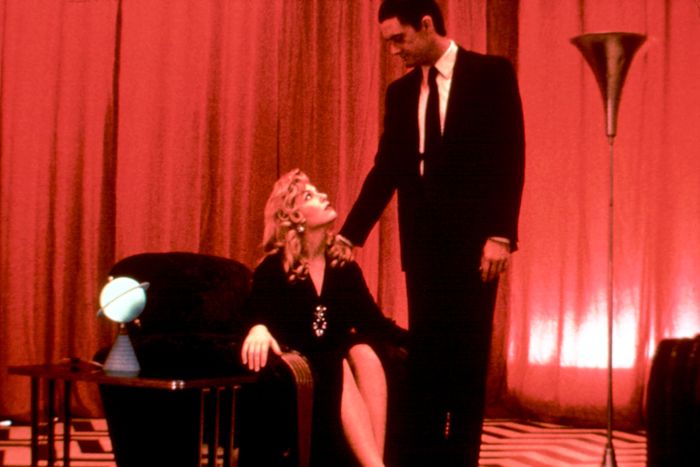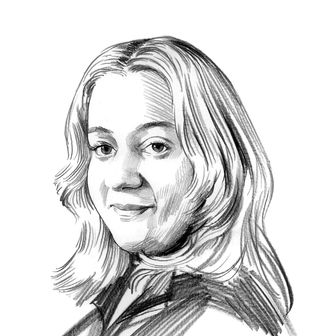
Angelo Badalamenti, the composer of Twin Peaks’ soundtrack and master interpreter of David Lynch’s filmography, died earlier this week at the age of 85. One of his closest collaborators during the Twin Peaks sessions was fellow composer Kinny Landrum, who played the synthesizers for the show’s entire soundtrack — a role he reprised for the 2017 reboot. As Landrum remembers, he first convened at a New York City studio with Badalamenti in “January or February 1990” to begin shaping what would eventually be the show’s sound, even if he didn’t realize it at the time. Here, Landrum reminisces about helping create the sonic landscape for that famed Pacific Northwest town.
I was recommended to Angelo by the recording-studio owner named Art Polhemus. He had asked Art who could do this gig and he recommended me. Angelo gave me a call first. I used to have an office on 23rd Street, and he came to that office to meet me and hear some stuff I had recently done. He wanted to see what I was able to accomplish with synthesizers. This was for the Julee Cruise album, which we did a year before Twin Peaks. They were trying to put an album of material together that would be like “Mysteries of Love,” her song from Blue Velvet. I had never seen Blue Velvet, so when I went home, my wife and I rented it from a video store and watched it that night. I’d never seen anything like it before. I could understand, musically, where they were coming from. We went in and did some sessions at Art’s studio. It was mostly Angelo, me, and Art, although David would come in occasionally.
Twin Peaks was called Northwest Passage originally, so I never heard the words Twin Peaks until after we recorded the stuff. The show was going on at the same time as Wild at Heart. I’d come into the studio and didn’t necessarily know what I was going to be working on each day. I do a lot of film work, and almost without exception, music is the last thing done before they mix it. This was unusual — we worked with no pictures or imagery at all. I didn’t see anything until it came on the air. I worked with Angelo with a lot of lead sheets. All we could see were chord symbols, melodies, and sometimes a bass line. Usually that was it. We weren’t seeing a score. I had no idea what the visual reference point was. Angelo had been told something by David, but I never was. I related to it as a piece of music. I didn’t know where this music was going. But that’s what made it so special.
The main thing from the first Twin Peaks session was “Laura Palmer’s Theme.” We only had a lead sheet for it. I never even asked about how it went. The vamp, the minor key at the beginning of the song, had been written as two half-notes. With the whole-note that was tied — where you hold the note but you don’t replay it — I said, “Angelo, why don’t we put a low piano note there?” Angelo said, “Great, that’s fine.” So we did it. There’s a very famous piece by Sergei Rachmaninoff called “Prelude in C-Sharp Minor.” It’s a solo piano piece. I’ve played it. Evidently, a year after the song came out, the Rachmaninoff estate threatened a lawsuit over those three notes. Angelo may have joked to me at one point, “Hey, that’s your fault!” Because it was my idea to put the low note in there. “Laura Palmer’s Theme” is a fairly unique piece of music. It goes through multiple keys. It’s not simplistic. Some parts remind me of the theme from Last Tango in Paris.
It would usually just be me, Angelo, and Art in the room. David was in the room when we did “Laura Palmer’s Theme” from that very first session. But after that, he was out in Los Angeles working and would rarely be with us. Angelo would walk in each morning with a lead sheet with whatever cue we’d be working on that day. We’d take a piece of music and just work on it. For example, the finger snaps on “Dance of the Dream Man” was my idea, which I thought of when I realized there were two actors from West Side Story in the show. When I saw their names, I told Angelo, “Hey, we have this walking bass line, why not put some snaps on it?” For the melody line on “Falling,” he suggested a French horn sound. So I played a sound from my emulator, which I thought was kind of funny, because Angelo was a French horn player in college.
When the second season started up, I went to the studio on a weekly basis to do new cues — I don’t call them “songs,” but “cues” — for the episodes. We talked a lot. There’s a cut in a later episode where Benjamin Horne has the entire Battle of Gettysburg on a ping-pong table. I happen to be a Civil War buff, and when they started talking about the battle, I was impressed that the history was right. We needed a battle martial sound. I said, “Angelo, I’ve got to do some marching drums on this.” I sat down and played the whole thing in one sitting. He loved it.
We spoke in specific musical terms. I thoroughly believe that a director should talk to his composer in emotional and abstract terms as opposed to musical ones, which was David’s preferred way of communicating with Angelo. But it’s up to the composer to translate that into concrete musical terms. That’s how Angelo was with us. Boy, it couldn’t have been easy.


